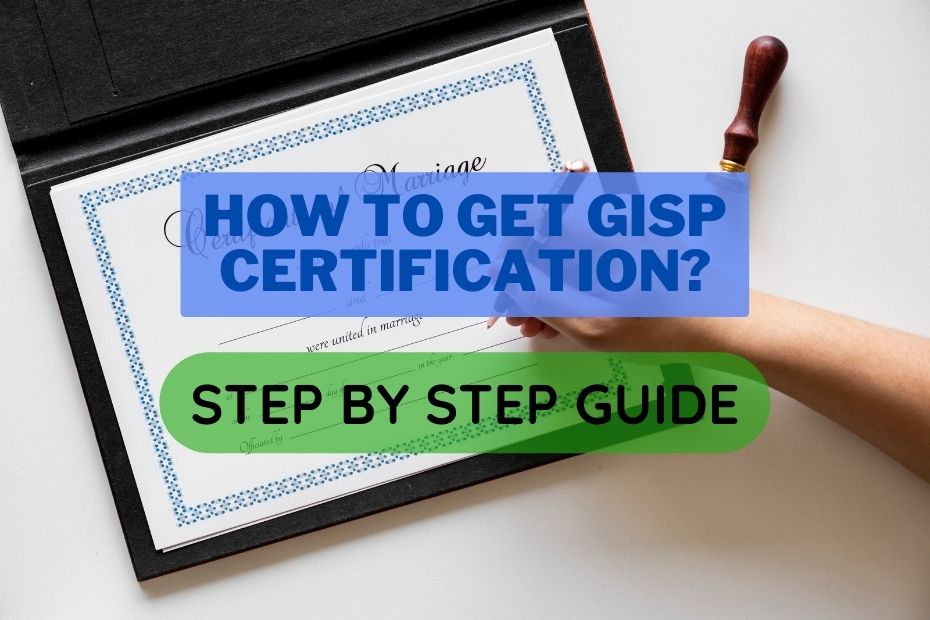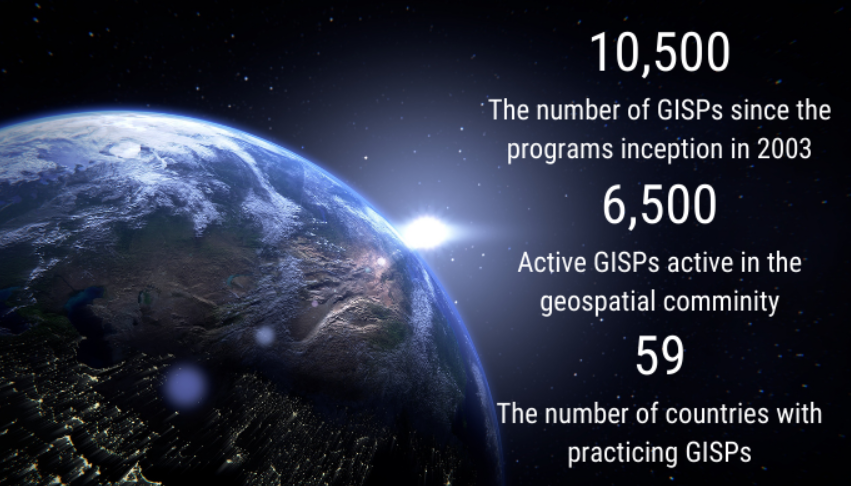For geospatial professionals, becoming a GISP (Geographic Information Systems Professional) certified practitioner is a prestigious milestone representing your expertise and commitment to the field. But embarking on the path to certification can seem daunting.
In this comprehensive guide, I’ll walk you through the key steps and requirements to earn your GISP credential through the GIS Certification Institute. By understanding the process and timeline, you can pursue this goal efficiently and accelerate your geospatial career.
An Overview of GISP Certification
The GISP certification validates your knowledge and experience applying geospatial technologies analysis and science to solve real-world problems. It is globally recognized as a gold standard in the GIS profession.
To become a GISP, you must meet education, experience, and contributions requirements through a portfolio review. You must also pass a rigorous exam testing your broad GIS knowledge and skills.
By meeting these qualifications and becoming certified, you showcase expertise across diverse geospatial domains while gaining a powerful credential to boost your career opportunities.
Top Benefits of Becoming GISP Certified
Earning your GISP provides numerous professional advantages:
- Demonstrates your comprehensive GIS knowledge to employers
- Qualifies you for senior geospatial positions
- Boosts earning potential and job mobility
- Distinguishes you as an expert in the GIS field
- Expands professional networking and growth opportunities
- Fulfills requirements for GIS job roles in government and other organizations
- Enhances technical credibility and leadership skills
Let’s look at how to embark on this rewarding journey.
Reviewing the Key Steps to Earn Your GISP
Becoming a certified GISP follows a clearly defined process encompassing four main steps:
1. Meet the Minimum Prerequisites
To qualify for GISP certification, you must:
- Have at least four years of cumulative geospatial work experience
- Hold a bachelor’s degree (or higher)
- Agree to the GISCI Code of Ethics and Rules of Conduct
2. Submit Your Portfolio Application
This detailed portfolio documents how you fulfill certification requirements across three areas:
- Education – Minimum of 24 credential points
- Experience – Minimum of 48 months professional GIS experience
- Contributions – Minimum of 24 contribution points
Your portfolio must satisfy the point requirements in each category through activities like higher education, conferences, publications, leadership, and community efforts.
The portfolio review costs a one-time fee of $200. Once approved, you have six years to complete the remaining certification steps.
3. Pass the GISCI Geospatial Core Technical Knowledge Exam
This 4-hour, 200 multiple choice question exam thoroughly evaluates your well-rounded GIS knowledge and skills as outlined in the GIS&T Body of Knowledge.
You can take the exam before or after portfolio submission. It costs $250 in North America or $300 internationally.
4. Receive Final Certification
Upon passing the exam and meeting all portfolio requirements, you will be awarded your official GISP certification. This is valid for three years before recertification is needed.
Now that we’ve outlined the major milestones, let’s look at optimizing your portfolio, studying for the exam, and more.
Crafting Your Strongest Portfolio
Your portfolio is crucial for demonstrating the education, experience, and contributions that qualify you for certification. Follow these tips to build the most compelling portfolio:
-
Highlight your best credentials – Lead with your strongest academic qualifications and most relevant geospatial work experiences.
-
Quantify achievements – Use metrics to showcase project successes, budgets managed, teams led, etc.
-
Feature noteworthy contributions – Include volunteer efforts, publications, research projects that highlight your well-rounded GIS impact.
-
Showcase breadth – Document knowledge across diverse geospatial domains from analytics to remote sensing.
-
Align to rubric – Ensure your portfolio sections directly address scoring rubric criteria.
-
Review carefully – Self-audit your portfolio to catch any gaps before submission.
Investing time to submit a polished, well-organized portfolio speeds your approval.
Preparing Thoroughly for the Certification Exam
While your portfolio focuses on achievements, the exam evaluates technical proficiency. Follow these best practices to prep:
-
Use the study guide – Closely review the 100+ page guide covering exam domains.
-
Take practice tests – Testing your knowledge identifies weak spots for more focused review.
-
Attempt sample questions – The more exam-like questions you solve, the better primed you’ll be.
-
Read recommended books – Consult reference books listed in the study guide.
-
Review labs/classes – Refresh key skills by retaking relevant online labs or courses.
-
Form study groups – Collaborating with peers helps reinforce knowledge.
-
Cram wisely – Increase study intensity in the final weeks but avoid exhausting all-nighters.
With diligent, smart preparation, you can ace this demanding exam.
Handling Logistics like Costs, Timeline and Renewal
Navigating the logistics smoothly enables you to stay on track with certification:
-
Plan timing strategically – Start your portfolio or exam when professional experience requirements are met.
-
Factor in costs – Budget $450-$550 to cover portfolio review and exam fees.
-
Mark renewal deadlines – GISPs renew every three years before expiration.
-
Leverage employer support – Many companies offer financial/study aid or time off for certification.
-
Allow 6 years – Complete all requirements within the 6-year window after portfolio approval.
-
Recertify promptly – Renewing weeks before expiration avoids credential gaps.
-
Track continuing education – Earn credits throughout your career to simplify recertification.
Proactively planning logistics prevents unwanted surprises or delays during your certification journey.
Building Your Geospatial Knowledge Portfolio
Beyond formal certification steps, there are many ways to demonstrate your well-rounded geospatial expertise and growth:
-
Pursue continuing education – Enroll in courses, certificate programs, online classes.
-
Present at conferences – Apply to speak at events like the Esri User Conference.
-
Publish writings – Author articles for industry publications and journals.
-
Volunteer expertise – Offer GIS services to nonprofits and community groups.
-
Take leadership roles – Initiate projects, mentor students, lead professional organizations.
-
Learn new technologies – Diversify abilities like Python coding, cloud platforms, UI design.
-
Get additional certifications – Complement GISP with vendor or niche credentials.
Cultivating diverse geospatial skills and experience bolsters your professional profile over time.
Using GISP Certification to Accelerate Your Career
The proven expertise, credibility and network you gain as a certified GISP creates a springboard to propel your geospatial career to new heights.
You can leverage your GISP in many impactful ways:
-
Highlight it prominently on your resume, website profiles and business cards.
-
Update email signatures and social media bios to feature your new credentials.
-
Advocate at your company to get GISPs listed as preferred qualifications for GIS roles.
-
Use your credential to negotiate higher salaries. According to Payscale, certified GISPs earn 12% more than uncertified peers.
-
Attend GISCI chapter and user group events to expand your professional community.
-
Increase knowledge-sharing by presenting at conferences, teaching classes and publishing writings.
-
Pursue leadership positions and bigger projects that boost visibility.
-
Confidently apply for more senior GIS positions you are now qualified for.
Earning your GISP exponentially expands your opportunities to advance in a thriving geospatial career.
As geospatial technology and data use accelerates worldwide, seasoned professionals who earn GISP certification differentiate themselves and open doors to leadership roles.
By methodically completing portfolio requirements, studying extensively and passing the rigorous exam, this prestigious credential is within your reach. The investment of time and effort pays invaluable dividends for your career long-term.
Stay motivated by keeping your professional goals at the forefront. Becoming a certified GISP allows you to fully realize your potential as a leader passionately using geospatial insights to drive change. The geospatial community eagerly welcomes your future contributions.

GISP Certificate: What You Should Know
GISP Certification is a well-recognized credential in the GIS community. It sets the benchmark for skills in the GIS technology field.
One important thing you need to know about it:
It not only considers your educational background. But it also assesses your experience and contributions to the GIS community.
As such, GIS professionals who want to advance their careers in their field should consider taking the GISP certification.
This article will help you understand the criteria for GISP certification. We also look into the value of getting this certification.
What is GISP Certification?
The GISP certification is a designation that allows us to demonstrate our expertise and competency in the field of GIS.
The GIS Certification Institute (GISCI) started the GIS Professional (GISP) certification in 2004. Ever since there have been 10,500 individuals certified through the GISP designation program with 5,500 active members.
Recently, the GISCI initiated the GISP Retired Designation (GISP-R). This designation is for any current GISPs who want to continue their designation into retirement. However, there are no figures available for the amount of uptake into the GISP-R certification yet.

GISP Certification How to earn it basics
How do I get a GISci GISP certification?
REGISTRATION: The GISP Certification process can be started at any time in your career. Register on the GISCI Home Page to access the online Portfolio Application. EXAM/PORTFOLIO REVIEW: GISCI offers the GISCI Geospatial Core Technical Knowledge Exam to individuals independent of the portfolio review process.
Do I need to take the GISP exam for recertification?
No GISP whose certification is in active status will be required to take the Exam for recertification. All applicants at the time of initial application submission must complete all certification requirements within 6 years from either a Portfolio application approval or passing the Exam.
What is a GISP certification?
What is a GISP? The official definition: “A GISP is a certified geographic information systems (GIS) professional who has met the minimum standards for ethical conduct and professional practice as established by the GIS Certification Institute (GISCI).” Okay.
How long does it take to get a GISP certification?
All applicants at the time of initial application submission must complete all certification requirements within 6 years from either a Portfolio application approval or passing the Exam. All new GISPs and all recertifying GISPs will be subject to an annual fee of $95/year.